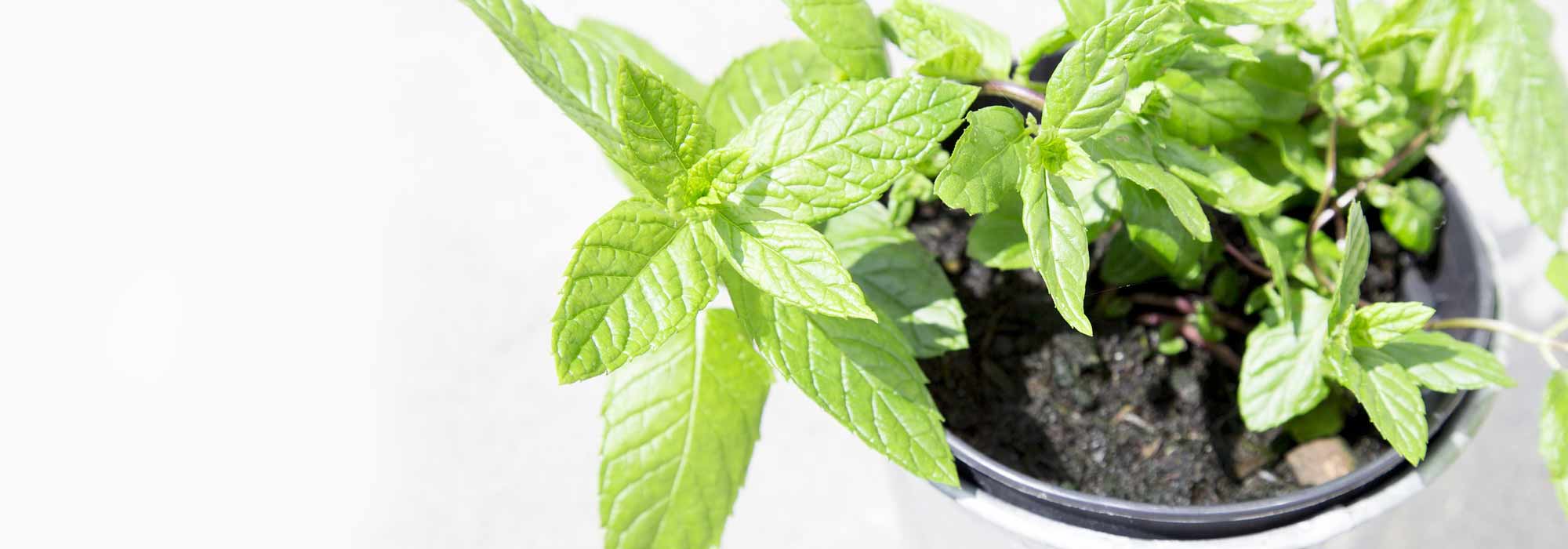
Growing mint in pots
Planting, caring, watering and repotting
Contents
Mint is an aromatic plant that is easy to grow in open ground in the garden, but also in a pot or window box. This second option also helps to limit its spread. Indeed, mint is a plant equipped with underground stolons that quickly produce new plants, invading their surroundings.
Particularly valued for its menthol-rich leaves, mint is an essential ingredient in the kitchen. Planted in an attractive pot and placed on a terrace, a balcony or the windowsill, it also makes a decorative plant, thanks to its pleasant foliage.
Although undemanding, hardy and easy to grow, potted mint requires some care to to let you enjoy its leaves all year round.
→ Also discover our complete guide to the mint
How to plant mint in a pot?
Mint is a perennial herbaceous plant native to Europe and belonging to family Lamiaceae. Aromatic essential, mint can easily be grown in a pot, provided right container and right substrate are chosen.
Choosing the right pot
First note that mint rootstocks develop extensively. With that in mind, choose a pot at least 30 cm in diameter and 20 cm deep so it can develop properly. You can of course opt for larger pots. Bear in mind that the larger the container, the more your mint will develop to produce many leaves.
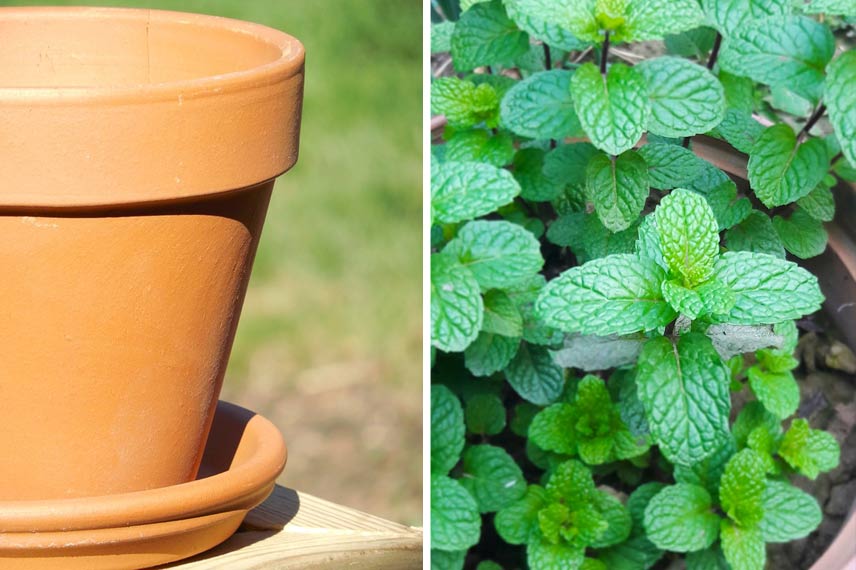
Also favour air‑permeable pots, that is terracotta or wood. These allow proper aeration of plant’s numerous rootstocks, further improving its development.
Finally, mint requires a substrate that is fresh (does not dry out), but also very well drained. Choose therefore a pot with drainage holes to avoid water stagnation.
Note: if you grow your mint plants in a planter, absolutely avoid planting several varieties of mint in same space unless you separate them by partitioning to limit their expansion.
Using the right substrate
As just noted, mint rootstocks develop considerably. To help them thrive in a pot, ensure you plant mint plants in a light, very well‑drained substrate that is also rich in nutrients. All these elements guarantee good development of foliage.
It is recommended in particular to place a layer of clay pebbles at pot base to ensure substrate drainage, which should consist of potting compost mixed with compost.
Planting steps
Planting a mint plant in a pot is not a very complex operation. However it requires observing four successive steps:
- Place 1 to 2 cm of clay pebbles (or pumice) in bottom of a pot with drainage holes.
- Fill pot with a light substrate made up of two‑thirds universal potting compost and one‑third compost.
- Depending on pot size, transplant up to three buckets of young mint plants into centre of container.
Fill watering can with lukewarm water (preferably) and water mint plants.
Where to place mint in a pot?
Once planting is finished, choose suitable location for your mint plants. Note that this herbaceous plant particularly prefers semi‑shaded positions.
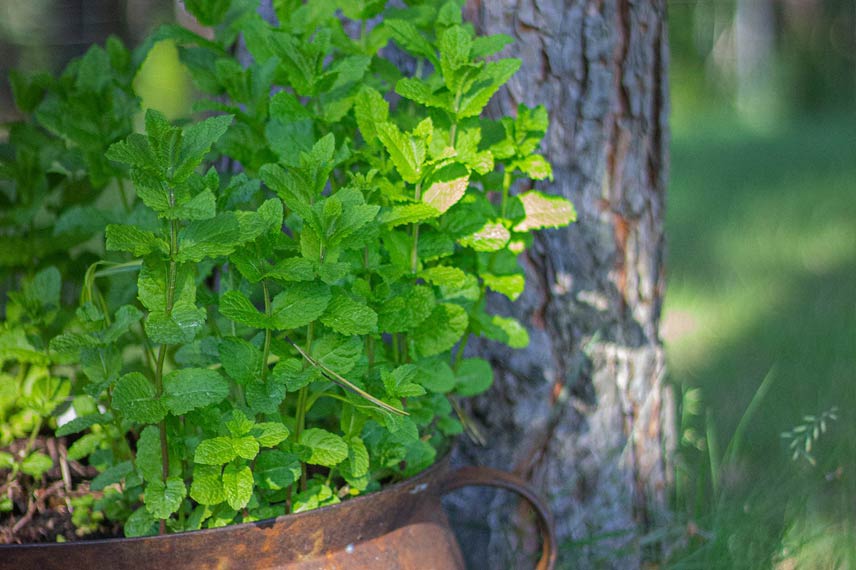
Indeed, full sun slows its growth and increases its already significant needs in water. However, mint can adapt to many situations, including non‑scorching sun, provided substrate remains permanently well fresh. It is indeed a vigorous plant, tolerant of cold as well as heat.
Ideally, place mint pots in semi‑shade, on a terrace, balcony or window sill sheltered from wind.
Read also
Mint: planting, growing, propagatingWhich mint varieties should I choose?
There are nearly 70 different varieties of mint, offering gardeners a very wide choice. However, when grown in a pot, it is better to opt for the most fragrant varieties.
Among them, notably spearmint, mentha spicata, and peppermint, mentha piperata, both give off a powerful menthol scent.
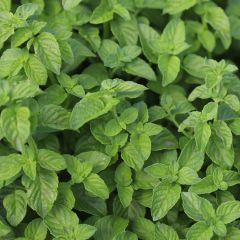
Spearmint - Mentha spicata in organic plant cultivation
- Height at maturity 50 cm
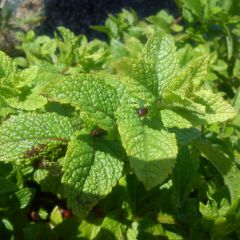
Moroccan Mint - Mentha spicata Nannah
- Height at maturity 50 cm
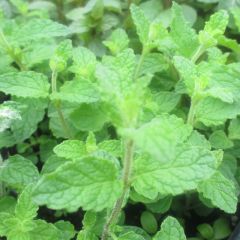
Organic Mentha spicata Fraise
- Flowering time August, September
- Height at maturity 50 cm
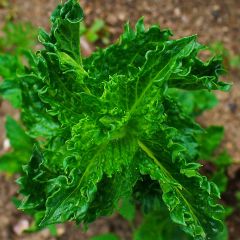
Organic Curly or Crinkled Mint - Mentha spicata Crispa
- Height at maturity 50 cm
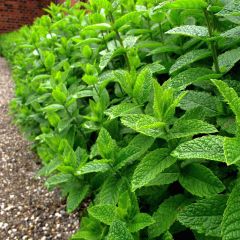
Organic Mentha piperita in Plants
- Height at maturity 50 cm

Mentha piperita Citaro
- Flowering time July, August
- Height at maturity 50 cm
Discover other Mint
View all →Available in 2 sizes
Available in 2 sizes
Available in 1 sizes
Available in 1 sizes
Available in 1 sizes
How to care for mint in a pot?
If your young potted mint plants do not require constant attention, they still need some care.
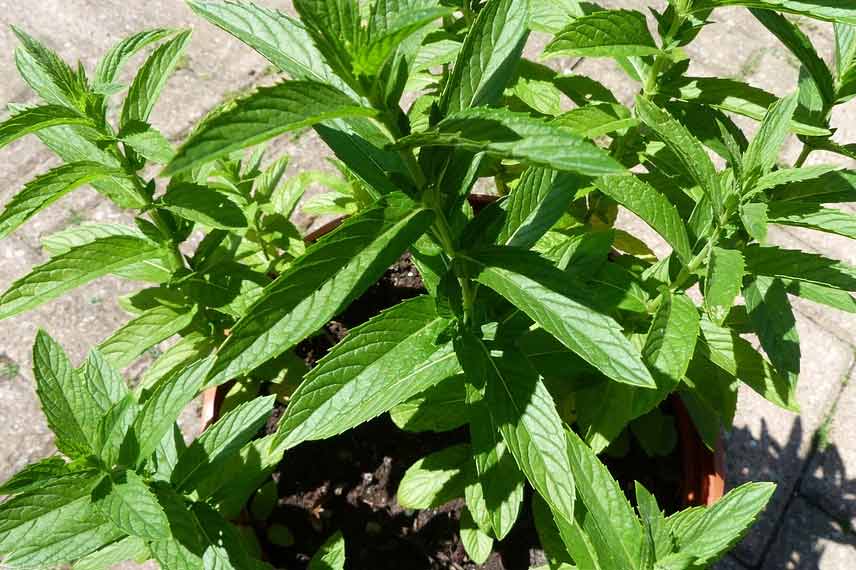
- Most important for plant health is to ensure soil does not dry out too much. We will cover watering mint in more detail later, which is vital for the plant.
- After flowering, single pruning suffices for wellbeing of your mint plants. Feel free then to shorten stems sharply so the plant produces new ones, which will also bear aromatic leaves.
- Potted mint must be repotted once a year, in spring or autumn, as it quickly exhausts potting mix.
- Main parasitic pest of mint is a green beetle: the mint leaf beetle. Collecting adults before they lay eggs is usually enough to contain the infestation.
Note: replace your mint plants after three years (on average), before they lose vigour and their leaves become less aromatic.
How to water mint?
As seen, good watering is essential for development of your potted mint plants, especially if they are exposed to sun for all or part of the day.
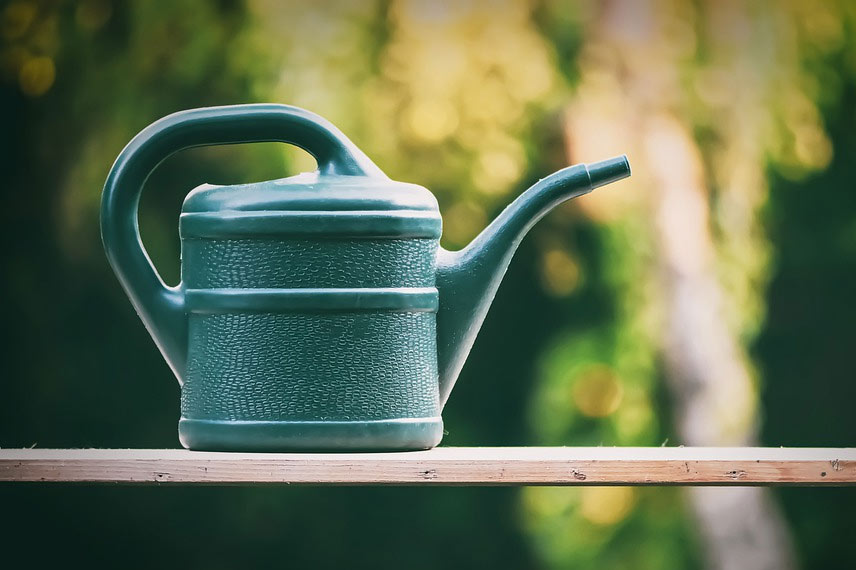
- Well-established young mint plants should be watered from above or dunked in rainwater warmed beforehand in sun. Water them regularly and preferably in the evening.
- Monitor regularly surface of your pots or planters so you can meet plant’s watering needs. If surface soil should never be too dry, wait for potting mix to dry slightly before watering it again.
Your youngest mint plants will appreciate being submerged, with their pot and for a few minutes, in a bucket filled with water. This can be done once a week, or more during periods of high heat and drought.
When and how to repot mint?
When purchasing, if you buy your mint young plants in buckets, you should repot them promptly into a larger pot (minimum 30 cm diameter and 20 cm deep). But first, start by cutting half the stems to encourage the young plant to develop new roots and new shoots.
Potted mint should also be repotted every year. For this, all you need to do is change part of its substrate (which is quickly exhausted) and to remove a good part of the roots that have invaded the pot. This will help your mint retain vigour and produce attractive foliage.
How to overwinter mint in a pot?
To start with, note that if mint needs a growing medium that stays consistently moist in summer, it does not need watering in winter.
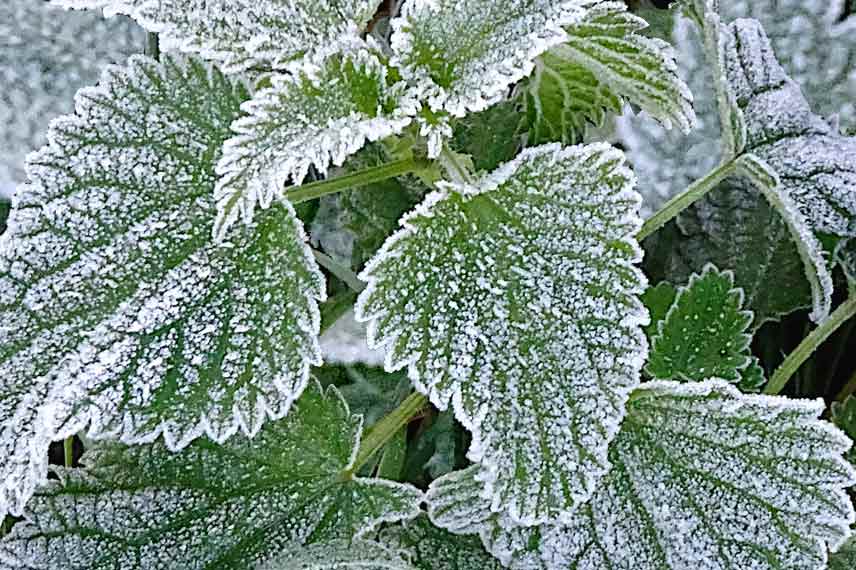
Most mint varieties are hardy, able to withstand temperatures down to around -15°C. Pots can therefore be kept outdoors in a well-sheltered spot protected from cold winds. However, terracotta pots tend to crack when temperatures fall below 0°C. To avoid this, you can move your potted mint plants into a greenhouse.
Note that mint stems generally do not withstand cold, unless you live in an area with mild winters. But even then, their fragrance is greatly reduced.
It is also possible to enjoy mint’s evergreen foliage year-round by growing it indoors during winter. In that case, wait until March or April to put your mint pots back out on the balcony.
- Subscribe!
- Contents
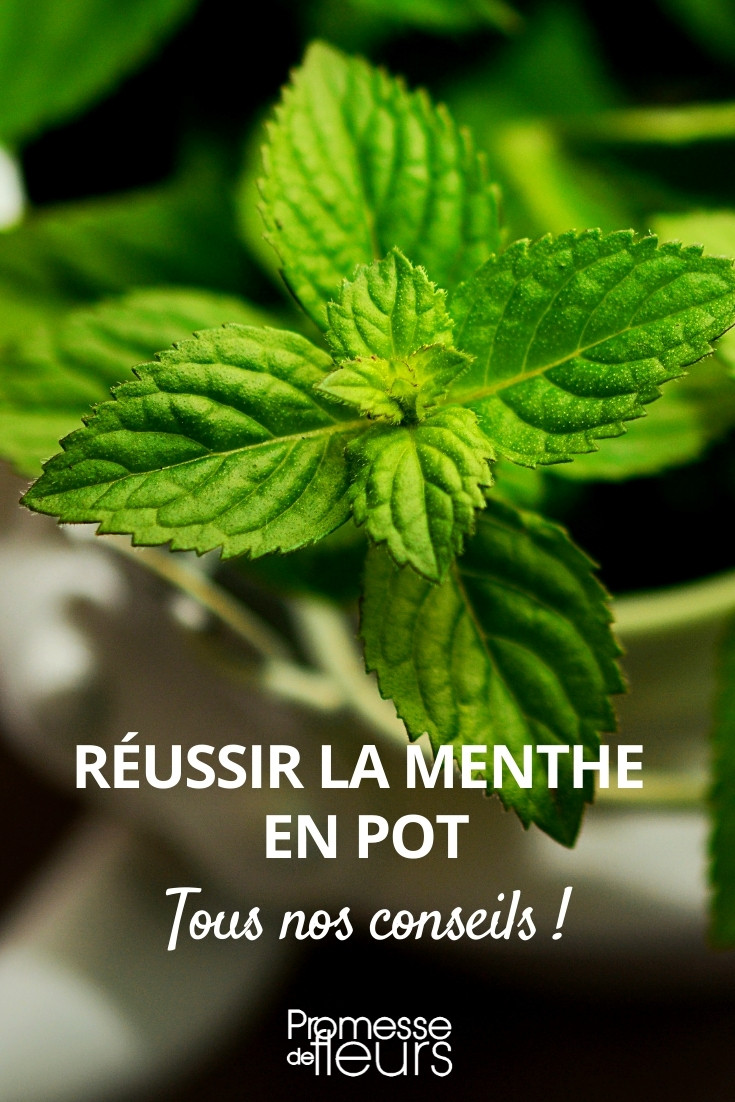































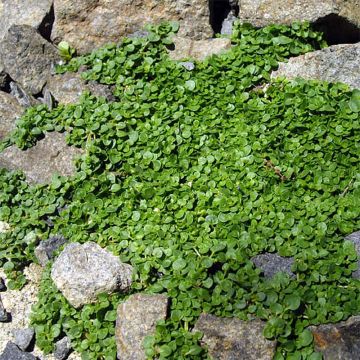
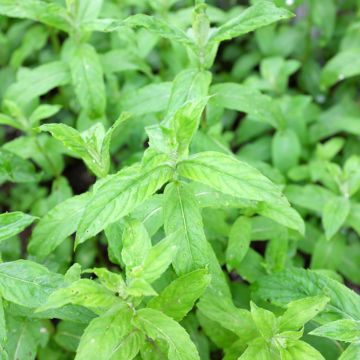

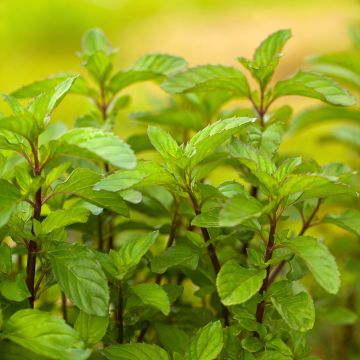
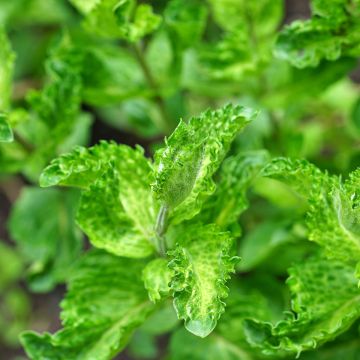
Comments